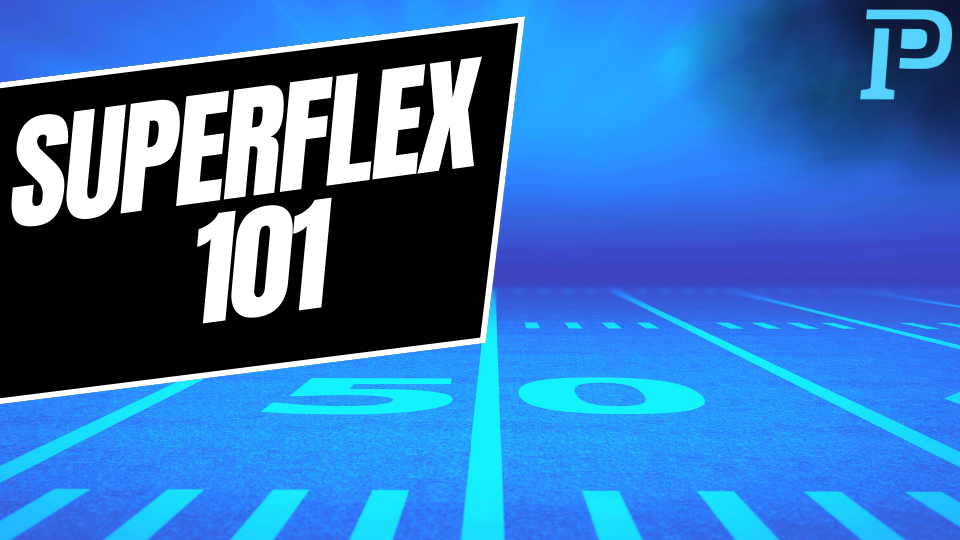Fantasy football is such an incredibly fun game because it can evolve with the sport. Back in the late 1990’s it was common to see starting fantasy rosters with only one QB starting and one regular starting flex position. Now, the Superflex League format is all the rage. It has now become the newest fantasy football adjustment that the market is comfortable with. How did we get here? Let’s investigate this recent roster evolution and see how we can learn more about it to navigate our fantasy fortunes!
What is a Superflex League?
Everyone has seen the “flex” position on a fantasy roster. Typically, only a running back, wide receiver, or a perhaps a tight end can be started in a flex spot. Superflex leagues are where you have an additional flex spot on your starting roster that allows a fantasy manager to play an additional quarterback.
This allows you to consider more options when contemplating who to fill in your flex spot on your roster for the week. Between injuries, and weeks where up to six teams can be on bye, it’s nice to get an additional pool of players to choose from when filling out your roster.
How is a Superflex League Different?
Many of us have played in leagues where you can only start one quarterback. Typically, these leagues have anywhere from 10-14 teams. Usually, there will be 6-10 starting quarterbacks floating on the waiver wire. In a Superflex league, you can place two quarterbacks onto your starting roster. Additionally, you will notice that even the less talented quarterbacks can score as many fantasy points as a player that would be placed in your flex spot. Superflex leagues are much more flexible than a “start 2 QB” league because it’s mathematically impossible for 12 teams to carry three starting quarterbacks. 2 QB leagues are normally 10 team leagues. But with a Superflex spot, you can place any skill position in the Superflex roster spot if your quarterback is on a bye that week.
Let’s do some in-depth analysis on why a Superflex league makes sense with today’s NFL. In the 2022 NFL season, Kenny Pickett played in 13 games, averaged 12 fantasy points per game, and finished No. 30 in fantasy points per game for quarterbacks. Not great! However, that 12 points per game would equal the same fantasy point output as RB 22 Ezekiel Elliott or WR 31 Zay Jones. The Superflex roster change adds a new pool of players that would normally stay off a roster in 1 QB league, adding in for more strategy and risk management when deciding if you would rather have a bad quarterback or a third down running back that is only used as a pass catcher.
Why Should You Play in a Superflex League?
Have you ever played a board game that required some strategy. It was a fun game, sure. But imagine if a small rule change could make for a whole new level of strategy? Would you rather not open yourself up to that? Or would you embrace the different strategy required to win the game? Superflex leagues are all about maximizing roster construction decisions. Fantasy football isn’t much fun when you only pick 1 QB, 1 WR, 1 RB, 1 TE, and hope you got all your selections in the top three finishes that week.
Fantasy football is a game about strategy and skill. However, there is a certain amount of luck that determines the winner. When you play in a league with a Superflex position, you are open to being in a league where strategy and game theory have bigger role in who wins. Therefore, it is less about luck. Now what are you waiting for? Jump into a mock draft with a Superflex spot and get a feel to understand how this roster spot can change your approach to team building!
Follow @4thandLange


